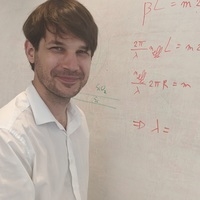Latest Past Events
Silicon Photonics-Powered Coherent Biosensing
MIT Lincoln Lab 3 Forbes Road, LexingtonDr. Diedrik Vermeulen SiPhox HealthSilicon photonics harnesses the power of light to enable high-speed, high-capacity data communication and processing on the silicon platform. When applied to coherent biosensing, this technology facilitates ultra-sensitive and real-time detection of biological molecules. By integrating photonic circuits with biosensing elements, unprecedented resolution and specificity in molecular detection can be achieved. This convergence promises transformative advances in diagnostics, therapeutics, and personalized medicine.Diedrik is one of the founders of SiPhox Health and serves as its Chief Executive Officer. Prior to joining SiPhox, Diedrik was the Director of Engineering at Analog Photonics commercializing chip-scale LiDAR and tunable lasers. He was also a research scientist at Massachusetts Institute of Technology and was a principal design engineer at Acacia Communications (IPO, acquired by Cisco) commercializing the first silicon photonics based coherent transceiver for long-haul and metro optical fiber communication. Diedrik's inventions on Fiber-To-The-Home optical transceivers were commercialized in a company Caliopa (acquired by Huawei). Diedrik holds a M.S. in Theoretical Physics, a M.S. in Applied Physics and a PhD in Photonics from Ghent University.Register for this event.
Historical Evolution and State-of-the-Art Fiber-Optic Communication Systems
MIT Lincoln Lab 3 Forbes Road, LexingtonDr. René-Jean Essiambre Nokia Bell LabsThis presentation will first provide a historical overview of the physical media used in wired communication, from electrical wires to waveguides. A special attention will be given to the hollow metallic waveguide, an area pioneered simultaneously by MIT and Bell Labs. It will be followed by a brief survey of innovative optical transmission lines that were proposed prior to the discovery of low-loss optical fibers. The next portion of the talk will focus on the ultimate limits of optical fibers to carry information in optical networks due to nonlinear response of the optical fibers. The role and impact of different electronic and optical technologies to improve optical network capacity will be laid out. This includes digital coherent detection, digital signal processing and optical amplification. The role and potential of solid-core optical fibers allowing multiple spatial modes in each fiber strand as well as hollow-core fibers will be discussed. Finally, the impact of quantum technologies on optical communication will be touched upon with an experimental demonstration of detection power efficiency above ten information bits per received photon.René-Jean Essiambre joined Bell Labs in 1997 and is currently based at the Murray Hill laboratory in New Providence, New Jersey, USA. Dr. Essiambre worked on topics such as fiber lasers, nonlinear fiber optics, advanced modulation formats, space-division multiplexing, information theory, and high-photon-efficiency systems. He participated in the design of commercial fiber-optic communication systems where several of his inventions were implemented. He has given over 150 invited talks and helped prepare and delivered the 2018 Physics Nobel Prize Lecture on behalf of Arthur Ashkin. He served on or chaired many conference committees, including OFC, ECOC, CLEO, and IPC. He received the 2005 Engineering Excellence Award from OPTICA and is a fellow of the IEEE, OPTICA, IAS-TUM, and Bell Labs. He was President of the IEEE Photonics Society (2022-2023) and is currently the Past-President (2024-2025).Register for this event.
Leveraging Ultra-Fast Optics to Capture Dynamic Responses of Mechanical Metamaterials
MIT Lincoln Lab 3 Forbes Road, LexingtonCo-sponsored by the IEEE Microsystems Society Prof. Carlos Portela Massachusetts Institute of TechnologyMechanical metamaterials across length scales—from nanometers to centimeters—have demonstrated unique mechanical properties enabled by a variety of 3D material morphologies. Significant advances in our understanding of these materials have pointed to structure-property relations that lead to unique macroscopic mechanical properties. Despite this progress, our knowledge of these materials is primarily limited to quasi-static deformation, while their dynamic properties remain to be fully understood. In this talk, we present explorations on the dynamic response of nano- and micro-architected materials under extreme dynamic conditions—enabled by various uses of ultra-fast optical excitation and probing—presenting novel non-contact and impact characterization techniques to determine acoustic and energy dissipation properties. Specifically, we will discuss high-throughput dynamic elastic-property characterization and supersonic microparticle impact testing on periodic architected materials at the nano- and microscale, along with explorations on the design and implementation of microscale acoustic metamaterials.Carlos Portela is the d’Arbeloff Career Development Professor in Mechanical Engineering at MIT. Dr. Portela received his Ph.D. and M.S. in mechanical engineering from the California Institute of Technology, where he was given the Centennial Award for the best thesis in Mechanical and Civil Engineering. His current research lies at the intersection of materials science, mechanics, and nano-to-macro fabrication with the objective of designing and testing novel materials—with features spanning from nanometers to centimeters—that yield unprecedented mechanical and acoustic properties. Dr. Portela’s recent accomplishments have provided routes for fabrication of these so-called ‘nano-architected materials’ in scalable processes as well as testing nanomaterials in real-world conditions such as supersonic impact. Dr. Portela received the 2023 Spira Award for Excellence in Teaching at MIT, was recognized as an MIT TR Innovator Under 35 in 2022, and was a recipient of the 2022 NSF CAREER Award and the 2019 Gold Paper Award from the Society of Engineering Science (SES).Register for this event.



